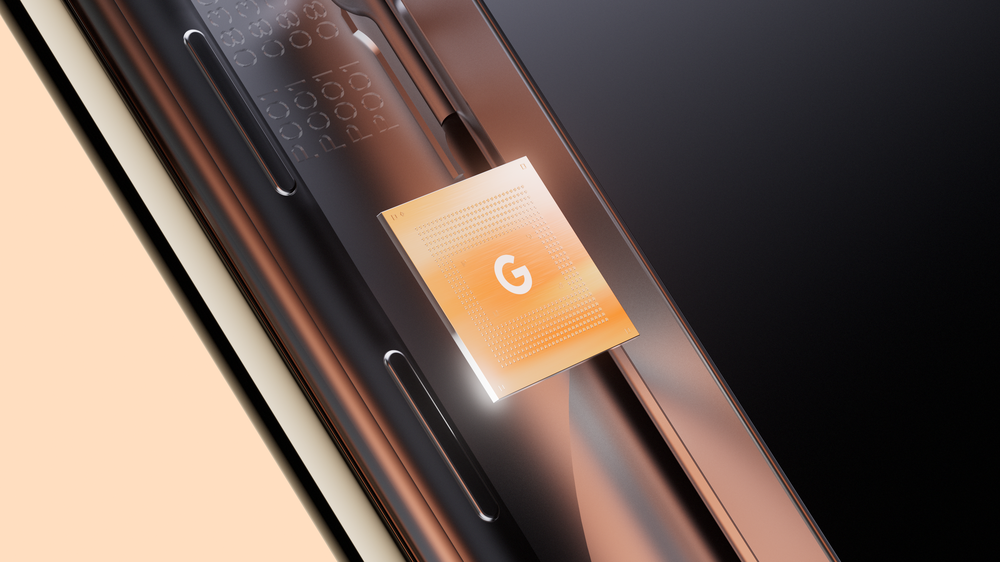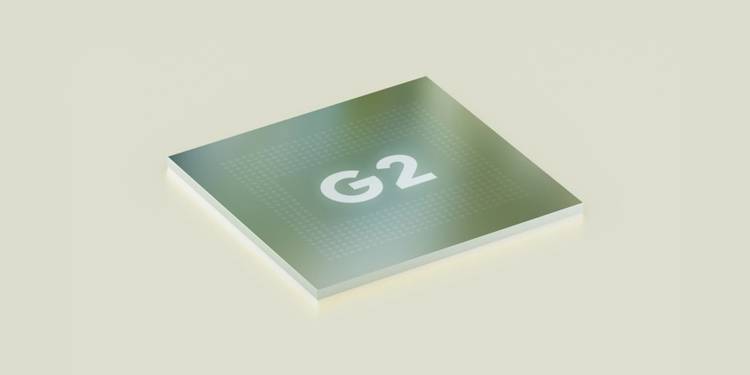Google Tensor G2: Everything we know about the Pixel 7’s chip
The next Google Pixel SoC’s speeds and feeds are unknown at this time.
As the Google Pixel 7 and Pixel 7 Pro’s October 6 debut draws near, we have a lot of information about them. The processor that will power these (hopefully) fantastic Android phones is still a bit of a mystery, though. Whether it was a blessing or a curse, Google is sticking with its proprietary processors, and the Pixel 7 will introduce the GS201, a new version of Tensor. The little that we do know is also quite odd, just like last year.
According to Google’s website, the Tensor G2’s official moniker, leaks haven’t occurred as frequently as they did for the first Tensor chipset up to this point. By April 2021, we had learned a lot about the initial GS101, but this year Google has been able to maintain a tighter ship.
Samsung will produce the Tensor G2 on its 4nm node using panel-level packaging. This is a technical way of explaining that to reduce waste, the chips will be cut from square wafers rather than rounds. Although it’s clever and could perhaps lower prices, this probably won’t have a significant impact on how well the chip performs in practical devices. Additionally, it might be helpful while there is still a chip shortage.
The Tensor G2 is almost certainly going to retain the 2+2+4 core cluster configuration that the original Tensor GS101 used, with two “super-big” cores, two more conventional big cores, and four small cores, according to recent research into the boot logs of a Pixel 7 Pro prototype and further confirmed by a Geekbench benchmark discovered by developer Kuba Wojciechowski on Twitter. The little cores in the G2 are still Cortex A55s, according to details in the logs and the Geekbench results. Even a workaround created especially for them is noted in the log. The tiny cores in question are identical to those found in the 2017-era GS101 Tensor chipset.
Now that it has been established, the first-generation Tensor and the G2 share the same other cores. For its “super-large” cores and huge cores, the previous-generation Tensor utilised ARM Cortex-X1 processors. The G2 appears to operate similarly.
The frequency is one of the things that varies throughout generations. At 2.35GHz, the A76 cluster is 100MHz faster. The X1 cluster now operates at 2.85GHz after receiving a 50MHz frequency boost. In Geekbench, this appears to have translated into a 10%–15% better result, while it is unknown how this artificial result would perform in practical applications.
Google submitted and then removed Google Pixel 7 and 7 Pro entries from the Play Console, confirming these specifications.
However, it appears that Google is greatly improving the GPU. Wojciechowski discovered that the Mali-G710 GPU is mentioned in the Geekbench results rather than the G78. That ought to result in performance and efficiency improvements of roughly 20%. The new GPU is expected to give the TPU, which is onboard and focused on machine learning, a 35% improvement in operations that are applicable. Upgrades are also being made to the TPU.
Details gleaned from previous teardowns and the Geekbench findings indicate that the G2 will once more be paired with a Samsung-made modem. This time, the Exynos Modem S5300 was specifically identified as the g5300b variant.
On paper, this tiny design improvement might look unappealing, but in terms of performance to power utilization, it might make perfect sense. Using an older generation of processors may provide you more flexibility to increase efficiency because newer processors have been shown to improve performance at the expense of energy usage. Additionally, the fact that Google has worked with this configuration for a generation makes it easier to further optimize the system. This reminds me a little bit of how Google improved the hardware-software interaction with each iteration of the Pixel phones while remaining with the same camera across generations.
One rumor states that the chipset’s mass production is anticipated to start in June 2022. This makes logical because Google needs to prepare enough Tensor G2 units for the October 6, 2022, launch of the Pixel 7 and 7 Pro.
Google Tensor G2 special features
Chipsets for smartphones are more than just a list of cores. Performance may be impacted by other information inside them. Improved machine learning applications were one of the main reasons Google decided to develop its own chipset with the first Tensor. As ambient computing becomes more prevalent, so-called heterogeneous compute, which involves distributing specialized workloads to various or customized hardware components as opposed to merely general-purpose CPUs, may have a greater effect on how users perceive a device’s performance.
It is about how we use our phones, not simply one or two major benchmarks. That’s true more often now for highly specialized workflows like speech recognition, translation, complex camera functions, and AR/VR. And you need more than a few current ARM cores and a GPU for that.
Parts of Google’s HDRNet image processing pipeline were built into the original Tensor in hardware, giving Google’s workloads more specialized support and direct performance than a general-purpose ISP can. Additionally, Google provided a separate security core (paired with a separate Titan M2 chip running “Trusty OS”).
Even while information about G2 hasn’t yet surfaced, you can probably expect that Google will keep making these kinds of customized adjustments. After all, a corporation would choose to develop a unique smartphone chipset for capabilities like these alone. Otherwise, Google would have utilized a Qualcomm product, as it previously did.
Google’s heterogeneous computation model will almost probably see additional upgrades and optimizations with the G2, with additional new camera and machine learning features being implemented in hardware where they can be done more rapidly and effectively.
Only that it will provide “even more AI-heavy breakthroughs and helpful personalized experiences across speech, photography, video, and security” was all Google had to say about the new chipset at I/O. The Tensor G3 (if that’s what it’s called) may deviate from this base over time as Google’s requirements evolve, despite the fact that the first GS101 Tensor was mainly based on Samsung’s Exynos architecture.
It’s also important to note how distinctive Google’s 2+2+4 core arrangement is. Other chipset manufacturers haven’t yet followed Google’s lead and included more than one “super-big” core to their designs. The VP and GM of Google Silicon, Phil Carmack, stated in an interview with Ron Amadeo of Ars Technica that this particular arrangement was chosen to boost efficiency at “medium” workloads by being able to swiftly complete tasks with more resources and return to a low-power state.
“You’ll have the two X1s operating when it’s a steady-state situation, where, say, the CPU load is lighter but it’s still modestly significant, and at that performance level, that will be the most effective… Even if you operate the two X1s at a frequency that makes them extremely efficient, their burden is still quite high. With twin X1s, a workload that would have ordinarily required two dual A76 processors operating at full capacity is now barely tapping the gas.”
Google Tensor G2 supported devices
The Google Pixel 7 and Pixel 7 Pro are among the smartphones in the Pixel 7 series, which also includes the Tensor G2. The debut of Google’s subsequent hardware has been scheduled for October 6. The entire nature of the power that Tensor G2 possesses will then be revealed to us for the first time. If history is any guide, it may also happen to a future Pixel a-series (probably the Pixel 7a in 2023). Although we anticipate it will use the first-generation GS101 chipset when it debuts in 2023, Google also wants to introduce a tablet that is Tensor-powered.
The illusive Google Pixel Fold, which has been speculated for more than a year without any official confirmation from Google, may also be powered by the Tensor G2. We had anticipated that the Pixel foldable will be released this year, but the most recent speculations have moved the release date back to 2023. It’s possible that Google’s folding phone won’t ship until even later than that, but if it does, the Tensor G2 would be a logical companion device.
Check out the Pixel 7 and Pixel watch debuts at the October Made by Google event
The future Made by Google event will be streamed alongside AP. During the event and in the weeks that follow, as developers and reviewers get their hands on the phones, we will probably learn all the remaining facts regarding the Tensor chip. The Tensor G2 won’t represent a significant improvement in performance or chip architecture, it is already obvious. However, as was previously discussed, this might be for the best. With the Tensor G2, Google may provide significantly superior thermals, resulting in less heat generation and power consumption in chip-using products.


Tinggalkan Balasan